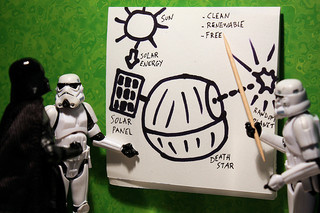We’ve all heard the warnings: Hiring managers spend mere seconds reviewing candidate resumes, so if you want to land the job, you have to stand out. Or how about this one: Show, don’t tell. Don’t just say you’re a great salesperson/administrative assistant/dog walker — give examples, concrete numbers, results.

So why are so many of us still creating the same old resumes, using bullet points and bold print and meaningless words like “dynamic” and “results-oriented” to entice hiring managers to request an interview? There has to be a better way — and there is.
Infographic-style resumes are a growing trend, allowing jobseekers to represent their education, experience, skills and accomplishments graphically so that it is visually pleasing and concise. Instead of the typical text-heavy narrative, an infographic grabs the reader’s attention with color and graphics, while presenting content in easy-to-digest chunks.
While infographics are becoming a more acceptable way to present your qualifications for a job, they aren’t right for every situation, and in order to be effective, they need to be done well. Before you create and send your graphic resume, keep some of these points in mind.
When to use an infographic — and when not to
As you might imagine, infographic-style resumes are effective in highly creative fields. In fact, graphic designers started the trend when they began designing infographics for themselves. However, they are useful in other fields as well, including marketing, public relations, sales and administrative work. One might even argue that any field would lend itself well to an infographic — since the idea is to distill a large amount of information down into the most pertinent insights, even those working in conservative fields like nursing or law could use the format.
Before you send out an infographic resume, consider where you are applying. If it has a reputation for being conservative, an infographic may not be well-received. For example, if you are applying to a government agency to work in Homeland Security after you earn your MSCSJ degree, you may be better served to submit a traditional resume or CV than an infographic.
The basics of infographic resumes
Now that infographics are such an indelible part of how we consumer information, most of us can easily identify effective and ineffective infographics. When it comes to your resume, you need to adhere to the principles of general infographic design to ensure that it’s effective.
- Make it easy to read. Your resume is not the place to use 15 fonts, 27 colors and all the graphics you can find. Keep it simple; sometimes the most effective infographics use only one or two colors and one font, and gain their impact from a creative layout and engaging text. When there is too much going on, the reader has no idea where to focus, and will probably just give up.
- Make it easy to understand. Don’t forget that you are creating a resume. That means you need to include the same information as a standard resume — all you are doing is presenting it differently. Don’t forget to include your contact information, education, work history and other pertinent information in a way that the reader can understand what it is. If the hiring manager can’t figure out where you gained all of your impressive credentials, you won’t get the interview.
- Have a point. A traditional resume not only presents your experience, it also tells a story about what you do and what you want to do. Don’t get so caught up in a clever presentation and the “graphic” part of the infographic that you don’t tell a clear story. Use a format and graphics that make sense for your industry and experience, clearly quantify your achievements and don’t leave the reader guessing as to what you’re hoping to accomplish.

Creating your infographic
You’re probably thinking, “This sounds great — but I have absolutely no experience in graphic design.” It’s okay; you don’t have to be a graphic designer to create a compelling infographic.
One possible route is to hire a graphic designer to work with you. You’ll get the most personalized results this way, but it will probably cost the most as well. However, if you were going to hire a professional resume writer anyway, it might be worth directing those funds toward a designer who can create an infographic for you. There are also online services that allow you to pull information from your various social media profiles to create infographics that you can then attach to job applications.
Regardless of how you choose to create you infographic, spend some time planning what to include and how you want to present it. Pore over your existing resume to determine which facts you can present numerically or graphically and develop a design that accurately reflects not only your experience but also who you are as a person, and watch your application response rate go up.


